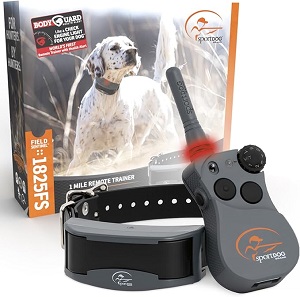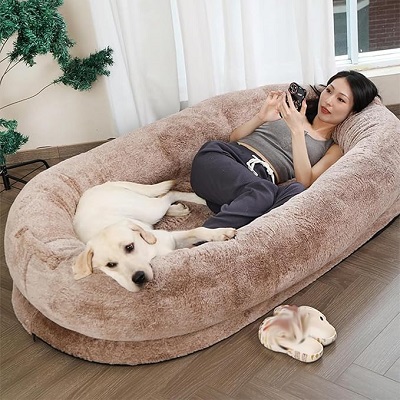
Most Independent Dog Breeds for Busy Owners
Most Independent Dog Breeds for Busy Owners: Low-Maintenance Companions
Introduction
For many dog owners, a busy lifestyle can make it challenging to meet the demands of an energetic or overly needy dog. If you’re someone with a tight schedule, whether due to work, travel, or other commitments, you may be looking for a breed that’s more independent and can happily entertain itself while you're away. Some dogs are naturally more self-sufficient, requiring less attention and exercise than others.
Here’s a list of independent dog breeds that are perfect for busy owners who need a dog that can handle some alone time and still be a loyal and loving companion when they’re home.
1. Basenji
Temperament: Independent, intelligent, and alert
Overview: Often called the “barkless dog” because of its unique yodel-like sound, the Basenji is a small, alert breed that is known for being independent and self-sufficient. They are intelligent and curious but don’t demand constant attention.
Essentials for Your Newly Adopted Pet
Welcoming a shelter pet into your life is a beautiful journey. Here are some handpicked items to help your new friend feel safe, loved, and right at home:
Why They’re Independent:
- Low Maintenance: Basenjis don’t need much grooming or constant supervision.
- Independent Nature: They are naturally independent, often occupying themselves with their own activities.
- Minimal Barking: Their quiet nature makes them well-suited for owners who are away for long periods.
2. Greyhound
Temperament: Calm, relaxed, and independent
Overview: Greyhounds may be known for their speed, but in the home, they are surprisingly laid-back and independent. After their bursts of exercise, they are content to lie around and rest for long periods.
Why They’re Independent:
- Low Maintenance: Greyhounds require little grooming and are relatively easy to care for indoors.
- Self-Sufficient: Once they’ve had their daily run, Greyhounds enjoy lounging around and can be left alone for longer periods.
- Low Energy Indoors: They don’t require constant play and are known to be couch potatoes when indoors.
3. Shiba Inu
Temperament: Independent, loyal, and reserved
Overview: The Shiba Inu is a Japanese breed known for its fox-like appearance and independent personality. They are relatively low-maintenance dogs that can entertain themselves without needing constant attention.
Why They’re Independent:
- Self-Sufficient: Shiba Inus are known to be independent thinkers and can entertain themselves if left alone for a while.
- Loyal but Not Overly Affectionate: While they are loyal to their families, they don’t demand constant affection.
- Clean and Neat: Shiba Inus are naturally clean dogs and often groom themselves, which can make care easier for busy owners.
4. Chow Chow
Temperament: Independent, calm, and aloof
Overview: The Chow Chow is known for its lion-like appearance and strong sense of independence. While they are affectionate with their family, they are also content to spend time alone and don’t require constant attention.
Why They’re Independent:
- Low Energy: Chow Chows have relatively low exercise needs compared to other breeds of their size.
- Aloof Nature: They are not overly needy and can happily stay by themselves for longer periods.
- Self-Sufficient: Chow Chows are independent and enjoy having their own space.
5. French Bulldog
Temperament: Independent, easygoing, and affectionate
Overview: French Bulldogs are a compact, low-energy breed that thrives in a relaxed environment. They are a perfect choice for busy owners, as they are relatively independent and don't demand constant attention.
Why They’re Independent:
- Low Maintenance: French Bulldogs don’t require extensive exercise or grooming.
- Self-Entertaining: They can spend time alone and keep themselves occupied with toys or simply relaxing.
- Affectionate but Not Clingy: While they love their humans, they are comfortable with solitude and are not overly clingy.
6. Whippet
Temperament: Calm, independent, and quiet
Overview: Whippets are known for their graceful appearance and independent nature. They are similar to Greyhounds in that they enjoy short bursts of exercise followed by long periods of relaxation.
Why They’re Independent:
- Low Energy Indoors: After a quick walk or run, Whippets are content to relax and nap for long periods.
- Quiet and Calm: They tend to be calm and quiet, making them easy to care for in smaller spaces or apartments.
- Self-Sufficient: They are independent enough to be left alone without becoming anxious or destructive.
7. Lhasa Apso
Temperament: Independent, alert, and affectionate
Overview: The Lhasa Apso is a small, long-haired breed that was originally bred to guard Tibetan temples. They are alert and can be a little aloof, but they are also independent and can be left alone for a while without any issues.
Why They’re Independent:
- Independent Minded: Lhasa Apsos are known to be independent and can entertain themselves.
- Low Maintenance: Though they have a long coat, their grooming needs are manageable and they don’t require much exercise.
- Protective but Not Clingy: They are loyal and protective but don’t need constant attention.
8. Afghan Hound
Temperament: Independent, dignified, and aloof
Overview: Afghan Hounds are one of the most elegant breeds and are known for their independent and regal nature. They don’t require constant attention and are content to spend time on their own.
Why They’re Independent:
- Low Maintenance Indoors: Once they have had their exercise, Afghan Hounds are calm and enjoy lounging around.
- Dignified and Aloof: They are independent dogs that enjoy spending time alone without becoming anxious.
- Minimal Interaction Needed: While they are loyal, they are not overly demanding and are fine with being left alone for a few hours.
Temperament: Independent, brave, and determined
Overview: The Scottish Terrier, or Scottie, is a small breed that is both independent and strong-willed. Scotties are known for being brave and confident, but they don’t need constant attention.
Why They’re Independent:
- Self-Sufficient: Scotties are independent dogs and can be left alone for longer periods without becoming anxious.
- Low Maintenance: They require moderate exercise but aren’t overly demanding when it comes to play or attention.
- Stubborn Yet Loyal: While they are loyal, they often do things on their own terms, making them good for owners who can’t always cater to their every need.
10. Akita
Temperament: Independent, dignified, and loyal
Overview: Akitas are large, powerful dogs that are known for their independence and loyalty. They are intelligent and strong-willed, making them excellent companions for owners who appreciate their calm and self-reliant nature.
Why They’re Independent:
- Low Energy Indoors: Akitas have a calm demeanor indoors and don’t require constant attention once they’ve had their daily exercise.
- Aloof with Strangers: While they are affectionate with their family, they tend to be aloof and reserved with strangers, making them more independent.
- Strong-Willed: Akitas are independent thinkers and may not need constant supervision or interaction.
Conclusion
If you lead a busy lifestyle and want a dog that can handle some time alone, these independent dog breeds are a great choice. While every dog still needs attention, love, and care, these breeds are naturally more self-sufficient, making them better suited for people with hectic schedules. Whether you're looking for a large, dignified breed like the Akita or a smaller companion like the Shiba Inu, these dogs are known for their ability to entertain themselves and remain calm when you're away, providing the perfect balance of independence and affection.
Affiliate Products
We may earn a small commission when you shop through our links — it helps us keep sharing love and care for every dog out there, at no extra cost to you.
Up to 75% Discount

Dog Collar with Health Monitoring
BUY NOW »
Up to 55% Discount

Luxury Faux Furhuge Napping Bed
BUY NOW »

